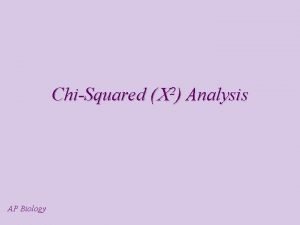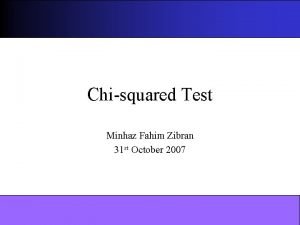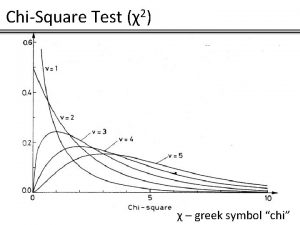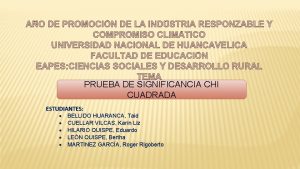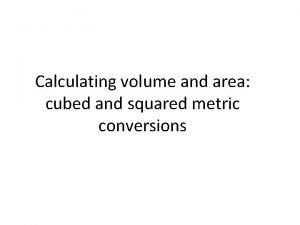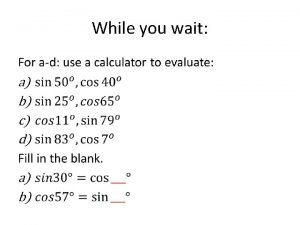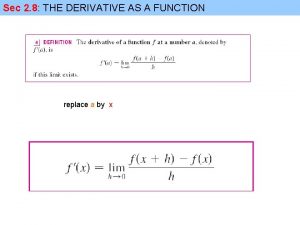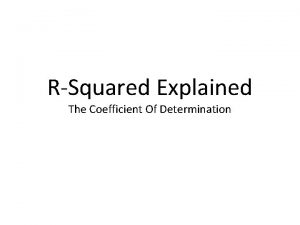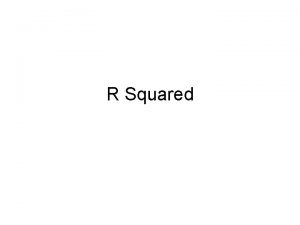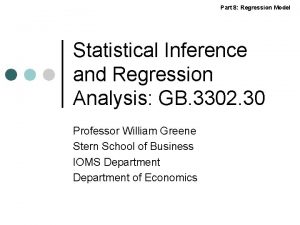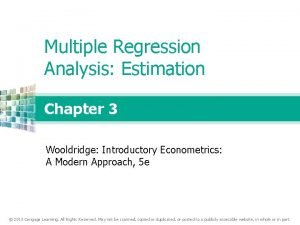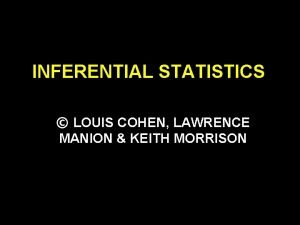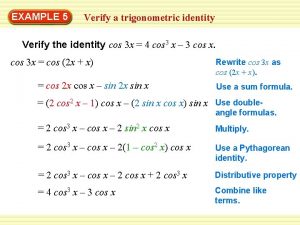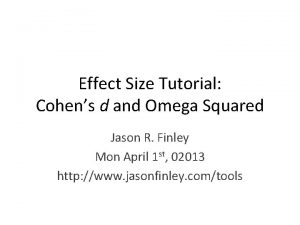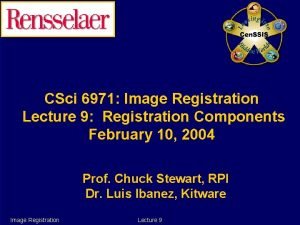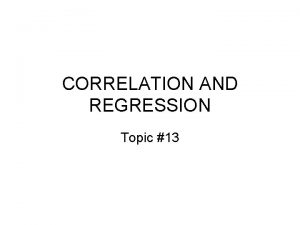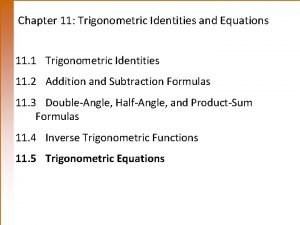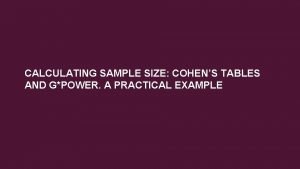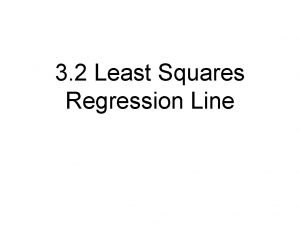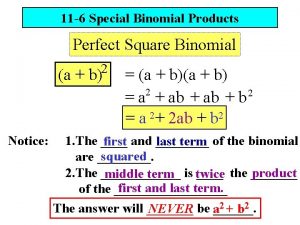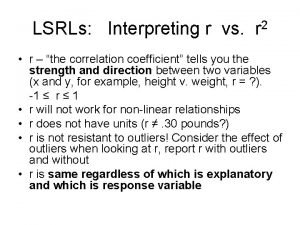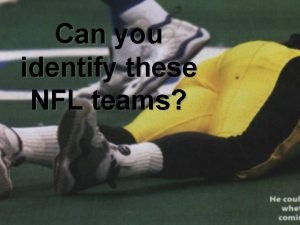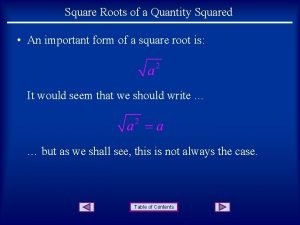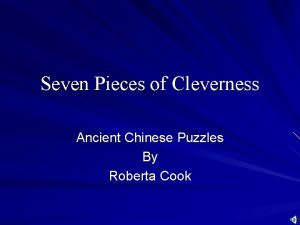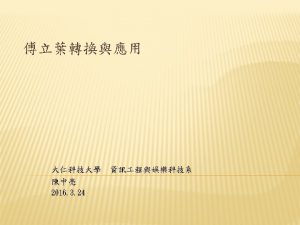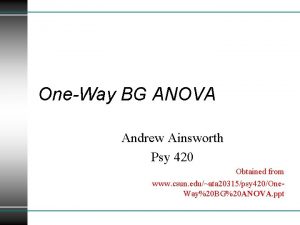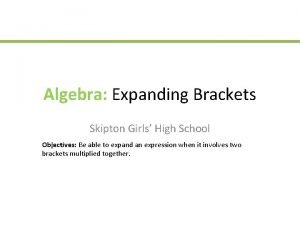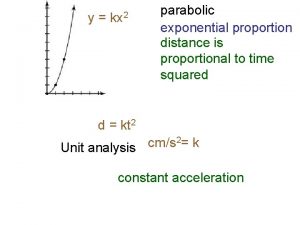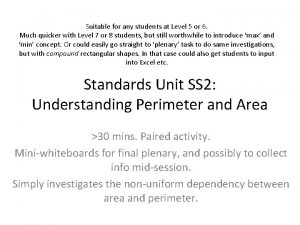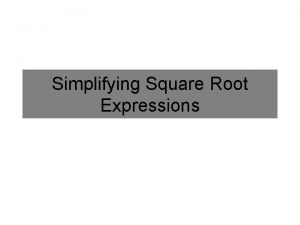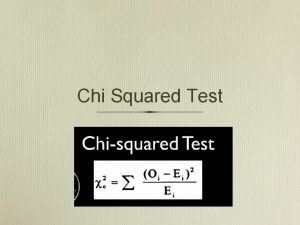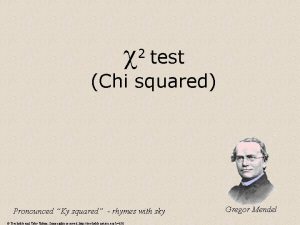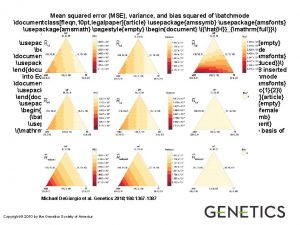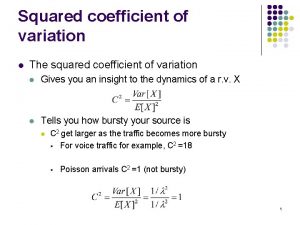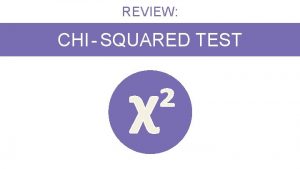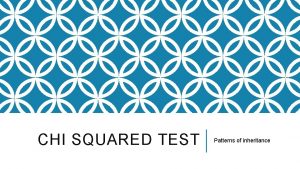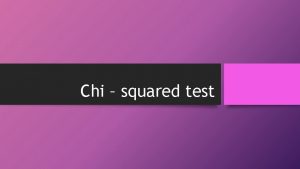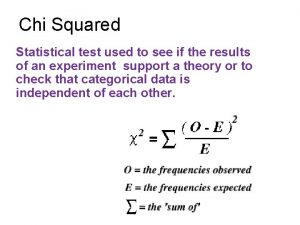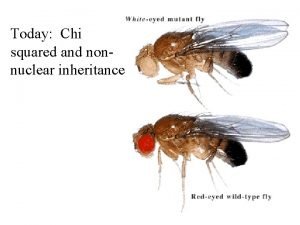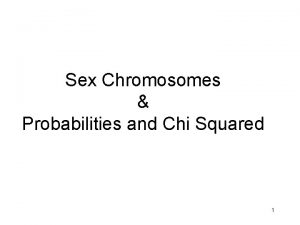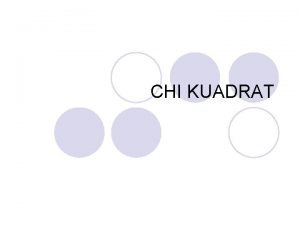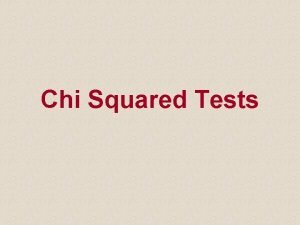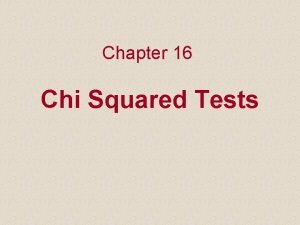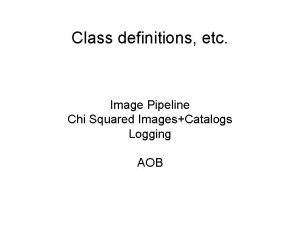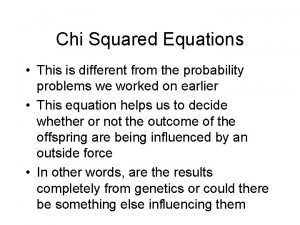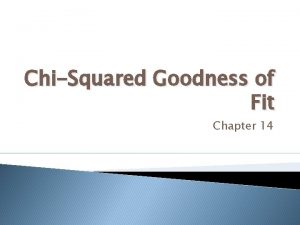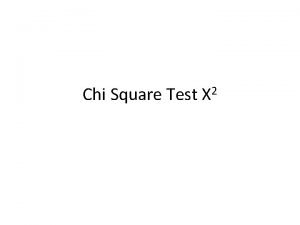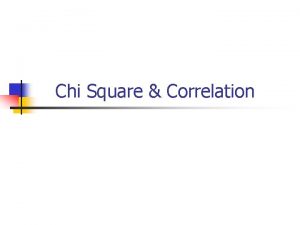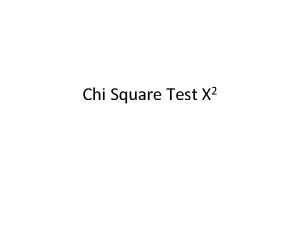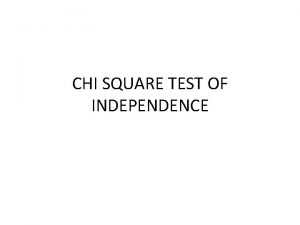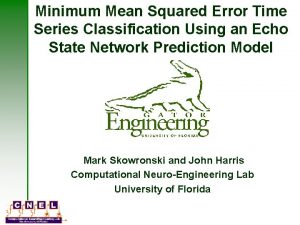Understanding and using the Chi Squared test in







































- Slides: 39


Understanding and using the Chi. Squared test in geography

Have you taught chi-squared? § Yes – lots of times § Just once or twice § Not yet

What do chi squared tests do? Two sorts § Chi squared test for a two-way contingency table tests for association between the variables § Chi squared goodness of fit test is for when we think the sample might have come from a particular population distribution § Both sorts compare observed frequencies in the sample with expected frequencies

Information to find expected frequencies Observed frequencies OCR A level Biology 2017 Paper H 420/02

Two-way table of observed frequencies Can you see how the observed frequencies have been calculated? OCR A level Psychology 2018 Paper H 657/01

Robin wants to investigate if there is a difference in the types of cycling accidents between adults and young people. He considered cyclists of age 20 and under to be in the category ‘Young person’ and cyclists over 20 to be ‘Adult’. He categorised the types of cycling accidents as ‘Hit by other vehicle’, ‘Hit something stationary’, ‘Skidded’ and ‘Fell off’. The counts are in the table below. (i) Use the data to carry out a χ2 test, using a 5 % significance level. State clearly your null and alternative hypotheses. Age Young person Adult Totals Type of Accident Hit Skidded Hit by other something vehicle stationary 17 12 4 32 49 5 17 7 11 Fell off Totals 8 41 4 12 48 89 OCR Core Maths B, Practice paper

Where do the two types of chi squared tests come up? Goodness of fit Biology Geography Maths Psychology AQA Biology AS and A level Edexcel Biology A & B AS & A level OCR A Biology AS and A level AQA A level Geography Edexcel A level Geography OCR A level Geography Two way contingency table AQA A level Geography Edexcel A level Geography OCR Core Maths B Edexcel AS & A level Further Maths AQA AS & A level Further Maths OCR A & B AS & A level Further Edexcel AS & A level Further Maths OCR A & B AS & A level Further Maths ? AQA Psychology A level Edexcel Psychology AS and A level OCR Psychology AS and A level

Visitors to a tourist attraction § A random sample of 50 visitors to a tourist attraction fills out a survey. § Does the age distribution of visitors match the age distribution of the population? Age No. of visitors % of UK population this age 0 -19 19 23. 5 20 -39 17 26. 4 40 -59 8 26. 3 60+ 6 23. 8 TOTAL 50 100%

Pebbles on a beach § A random sample of pebbles has been collected from 3 locations on a beach. § Is the distribution of types of pebble independent of location? Angular or subangular Subrounded Rounded Well rounded TOT A 6 13 15 16 50 B 2 13 20 15 50 C 8 10 27 5 50 TOT 16 36 62 36 150

Free toy car Colour Frequency red 7 blue 2 white 4 black 5 silver 12 TOTAL 30 A café gives a free toy car with each children’s meal: red, blue, white, black or silver. A group of parents meet at the café regularly with their children – they collect data about the free cars. Is each colour equally likely – what do you think?

Over to you § You will work through a Desmos activity designed to help students think about how to decide whethere is enough evidence that all car colours are not equally likely Colour Frequency red 7 blue 2 white 4 black 5 silver 12 TOTAL 30

Testing whethere is evidence that the car colours are not equally likely Basic idea: § Start by assuming that they are equally likely. § The technical way of saying this is that the null hypothesis is that all car colours are equally likely. § Calculate the expected frequencies you would expect if they were equally likely. § Compare observed and expected frequencies.

Hypotheses § Null Hypothesis: car colours equally likely § Alternative hypothesis: car colours not equally likely § Assume null is true and look for evidence in favour of alternative

Degrees of freedom § When you were filling in possible frequencies, you could choose values for the 4 colours but the value for the last one had to make the total be 30. § There are 4 degrees of freedom § 5 -1=4

The chi squared test statistic §

The critical value § § For a chi-squared distribution with 4 degrees of freedom, 5% of the time you would get a value of 9. 4877 or larger This is the distribution we would get if the null hypothesis was true

Decision time §

What if – the colours were not equally likely? § § The value of the test statistic would generally be bigger The value of the test statistic would generally be smaller There would generally be no effect on the size of the test statistic Not possible to tell

What if – the colours were equally likely but the sample size was bigger? § § The value of the test statistic would generally be bigger The value of the test statistic would generally be smaller There would generally be no effect on the size of the test statistic Not possible to tell

What if – the colours were equally likely but fewer colours? § § The value of the test statistic would generally be bigger The value of the test statistic would generally be smaller There would generally be no effect on the size of the test statistic Not possible to tell


MOVING ON TO TWO WAY CONTINGENCY TABLES

Pebbles on a beach § A random sample of pebbles has been collected from 3 locations on a beach. § Is the distribution of types of pebble independent of location? Angular or subangular Subrounded Rounded Well rounded TOT A 6 13 15 16 50 B 2 13 20 15 50 C 8 10 27 5 50 TOT 16 36 62 36 150

Pebbles on a beach § A random sample of pebbles has been collected from 3 locations on a beach. § Is the distribution of types of pebble independent of location? Angular or subangular A 6 B 2 C 8 TOT 16 Subrounded Rounded Well rounded The distributions are not identical in the samples 13 15 BUT we are interested 13 20 in the populations TOT 16 50 15 50 10 27 5 50 36 62 36 150

Let’s do some thinking Angular or subangular Subrounded Rounded Well rounded TOT A 6 13 15 16 50 B 2 13 20 15 50 C 8 10 27 5 50 TOT 16 36 62 36 150 § Assume three totals of 50 were part of the design of the study § Even if different samples had been chosen, these totals would be the same

Testing whethere is independence Basic idea: § Start by assuming that there is independence. § The technical way of saying this is that the null hypothesis is that the distribution of pebble types is independent of location. § Calculate the expected frequencies you would expect if there was independence. § Compare observed and expected frequencies.

Calculating expected frequencies Angular or subangular Subrounded Rounded Well rounded TOT A 50 B 50 C 50 TOT § § 16 36 62 36 150 The sample sizes are equal so we would expect equal numbers of each type of pebble from each location. Assume the totals at the bottom represent the distribution on the whole beach.

The expected frequencies Angular or subangular Subrounded Rounded Well rounded TOT A 5. 33 12 30. 67 12 50 B 5. 33 12 30. 67 12 50 C 5. 33 12 30. 67 12 50 16 36 62 36 150 TOT • The row totals are equal so each column total is split equally. • It is not possible to have part of a pebble but the expected frequencies show what would happen on average so they do not need to be whole numbers. • If the row totals were not equal, the column totals would be split in the ratio of the row totals.

Comparing observed and expected frequencies A or SR SA R WR A 6 13 15 16 B 2 13 20 15 C 8 10 27 5 Obs A or SR R WR SA 5. 33 20. 6 A 12 12 3 7 5. 33 20. 6 B 12 12 3 7 5. 33 20. 6 C 12 12 3 7 Exp (Obs – Exp)2 A or SA SR R WR Exp 0. 083 1. 554 1. 333 A 2. 083 0. 022 0. 75 B 1. 333 0. 333 1. 941 4. 083 C X 2=13. 683. This is the total of all the contributions to the test statistic

Degrees of freedom (ν) Angular or subangular Subrounded Rounded Well rounded TOT A 50 B 50 C 50 TOT § § 16 36 62 36 150 Suppose the totals are fixed and you can put what you like in the other cells (as long as the totals are correct). How many numbers can you choose freely?

Degrees of freedom (ν) Angular or subangular Free A B Subrounded Rounded Free Well rounded 50 50 C 50 TOT § § TOT 16 36 62 36 150 Suppose the totals are fixed and you can put what you like in the other cells (as long as the totals are correct). How many numbers can you choose freely?

The probability distribution of the test statistic 0, 16 Chi squared probability distribution 0, 14 0, 12 0, 1 f(x) • The horizontal axis shows possible values of the test statistic. • The vertical axis measures how likely the value is if the null hypothesis is true. • This type of probability distribution is called a chi squared ( 2) distribution. 0, 08 0, 06 0, 04 0, 02 0 0 10 20 30 40 x

How big is “big”? 0, 16 The shaded area shows the total probability that the test statistic is more than 12. 59 0, 14 0, 12 0, 1 f(x) • The area under the graph represents probability. • The probability that the test statistic is more than 12. 59 is 5% (IF the null hypothesis is true). Chi squared probability distribution 0, 08 0, 06 0, 04 0, 02 x 0 0 10 20 30 40


X 2 = 13. 683 ν=6 The 5% significance level is often used

Conclusion § Our hypotheses were: § H 0: the distribution of pebbles is independent of location on beach. § H 1: distribution of pebbles and location on beach are not independent. § Our conclusion: 13. 683> 12. 59 so there is sufficient evidence to suggest the distribution of pebbles is not independent of location on beach.

Interpretation § Our test shows evidence of dependence– but there is a 5% chance that it could just have been an unusual sample

About the AMSP § § § A government-funded initiative, managed by MEI, providing national support for teachers and students in all state-funded schools and colleges in England. It aims to increase participation in AS/A level Mathematics and Further Mathematics, and Core Maths, and improve the teaching of these qualifications. Additional support is given to those in priority areas to boost social mobility so that, whatever their gender, background or location, students can choose their best maths pathway post-16, and have access to high quality maths teaching.
 A squared plus b squared equals c squared
A squared plus b squared equals c squared Chi square chart ap bio
Chi square chart ap bio Statistics chi square
Statistics chi square Chi square conclusion
Chi square conclusion Chi-square symbol
Chi-square symbol Cái miệng nó xinh thế chỉ nói điều hay thôi
Cái miệng nó xinh thế chỉ nói điều hay thôi đổi địa chỉ logic sang địa chỉ vật lý
đổi địa chỉ logic sang địa chỉ vật lý Chi chi nnn
Chi chi nnn Chi chi tg tf
Chi chi tg tf Chi offre e chi domanda lavoro
Chi offre e chi domanda lavoro Is volume cubed or squared
Is volume cubed or squared Trigonometric expression
Trigonometric expression Sec derivative
Sec derivative What does the coefficient of determination tell us
What does the coefficient of determination tell us How to calculate r squared
How to calculate r squared R squared adj
R squared adj R-squared interpretation example
R-squared interpretation example Knowledge shared is knowledge squared meaning
Knowledge shared is knowledge squared meaning Cohen manion morrison
Cohen manion morrison Cos 2x formula
Cos 2x formula Cohen's d spss
Cohen's d spss Reciprocal squared
Reciprocal squared Coefficient of regression
Coefficient of regression Trigonometric identity
Trigonometric identity Cohen table sample size
Cohen table sample size Least squares regression line
Least squares regression line There are ____ non perfect squares between 50² and 51²
There are ____ non perfect squares between 50² and 51² X squared cubed
X squared cubed R squared vs correlation coefficient
R squared vs correlation coefficient Stupid sunbathers nfl team
Stupid sunbathers nfl team Dmca square root
Dmca square root Cleverness squared puzzle
Cleverness squared puzzle Indian burial grounds candy bar
Indian burial grounds candy bar Sinc wave
Sinc wave Effect size small medium large
Effect size small medium large Expanding squared brackets
Expanding squared brackets Y= kx^2
Y= kx^2 Squared paper
Squared paper Under root
Under root Times squared academy
Times squared academy

